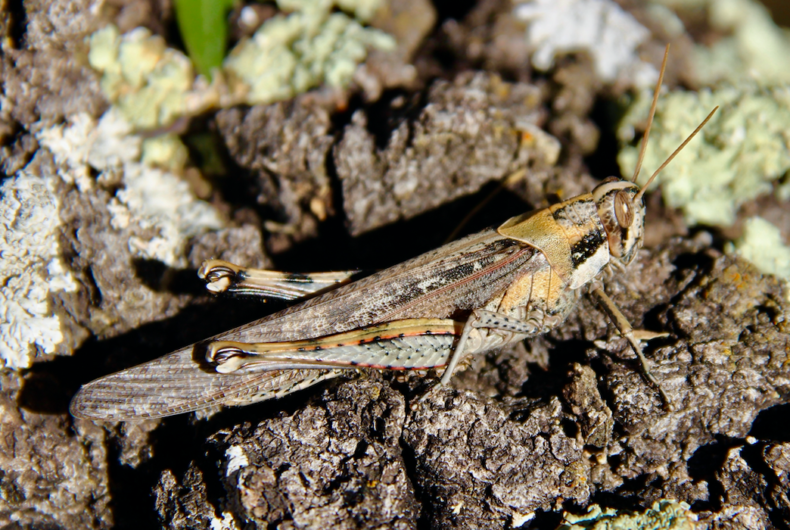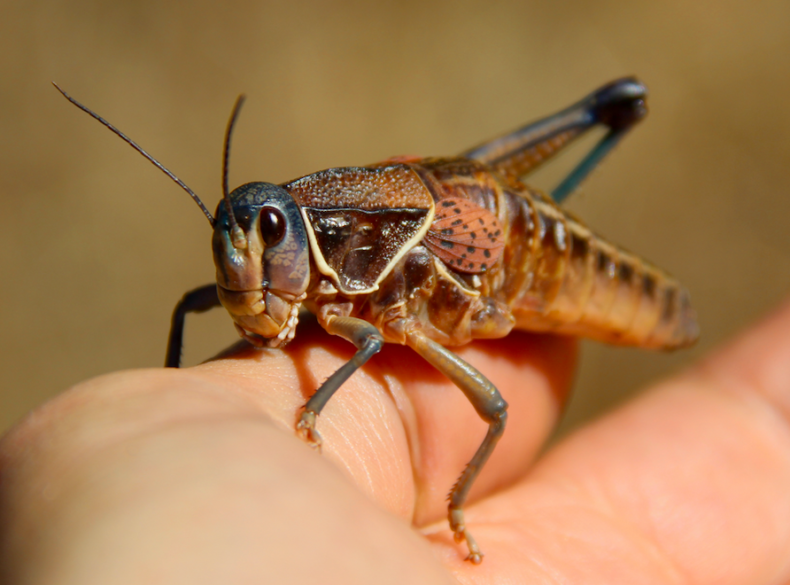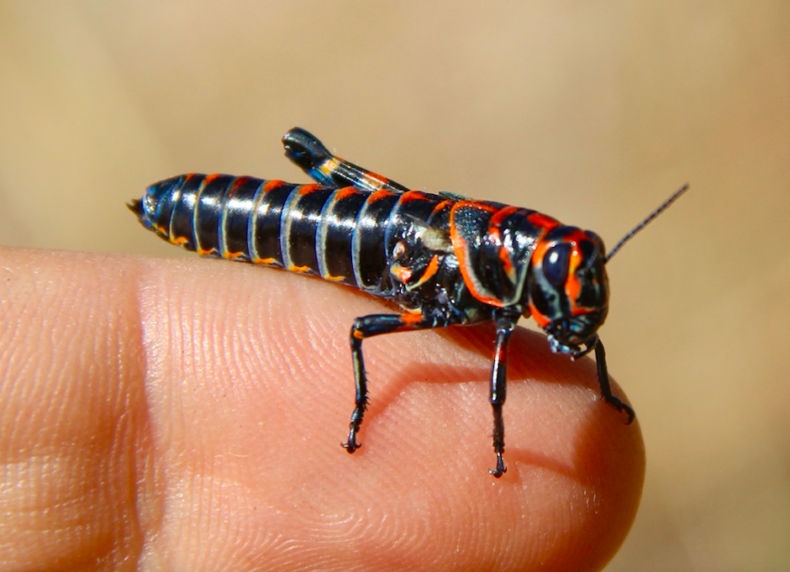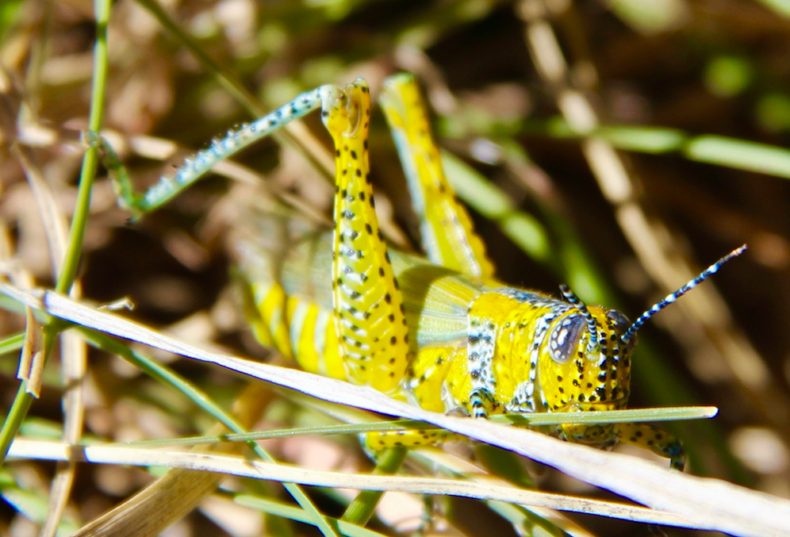
Last month I went to Arizona on a reporting trip. One afternoon excursion took me to the eastern Patagonia Mountains, the rolling dun-colored range that aligns with one segment of the United States’ border with Mexico. I walked through oak-juniper woodlands alive with gray foxes and Coues deer, a small, desert-adapted subspecies of whitetail. Tufty yellow bunchgrasses carpeted the ground. And in the grass were grasshoppers, popping up like corn with my every step.
Even within the underloved phylum of Arthropoda, grasshoppers don’t get much respect. They lack the flashy charisma of butterflies, the collective brilliance of ants, the zeitgeisty appeal of bees. If they’re known for anything, it’s the tendency of some species to gather into swarms of crop-ravaging, famine-inducing locusts, a behavior that hardly wins them many supporters. I’d never given them much thought myself, save for the foam-bodied, rubber-legged imitations that have an uncanny knack for coaxing big trout to the surface.
As I strolled the crackly folds of the Patagonia foothills, however, I found myself weirdly enchanted by the six-legged lives whirring up beneath my soles. Stooping to examine them, I realized what should have been obvious: Grasshoppers are astonishingly diverse. I scooped up one specimen after another, each stranger and lovelier than the last. We’re accustomed to thinking about aggregations of grasshoppers as “hordes,” “plagues,” and “swarms,” yet none of those collective nouns seemed right for the spectacular entomological weirdness at my feet. “Menagerie,” maybe.
Below, three curiosities from my grasshopper safari. Any of my species IDs could be wrong; please correct errors in the comments.

The plains lubber grasshopper, Brachystola magna, an omnivorous insect too gargantuan and short-winged to fly. They’re ordinarily prodigious leapers, but, as you can see, this specimen only had one hind leg — probably the reason I was able to capture and photograph it. (No, I didn’t pull it off; how could you even suggest such a thing?!) Big fan of his rakish, Jiminy Cricket vibe.

I’m reasonably confident this is Dactylotum bicolor, the rainbow or barber-pole grasshopper, a species whose red detailing warns away lizards and other potential pred — what the? Another one-legged grasshopper! Seriously, I swear that I’m not dismembering insects. And I’m kicking myself for the not-quite-in-focus eye.

Finally, the panther-spotted grasshopper, Poecilotettix pantherinus — probably the most gorgeous Patagonian hopper of all, though my photo doesn’t perfectly capture it. Look at that detailing (and two intact hind legs!). God might have an inordinate fondness for beetles, as J.B.S. Haldane famously put it, but I think She also spared some affection for hoppers.